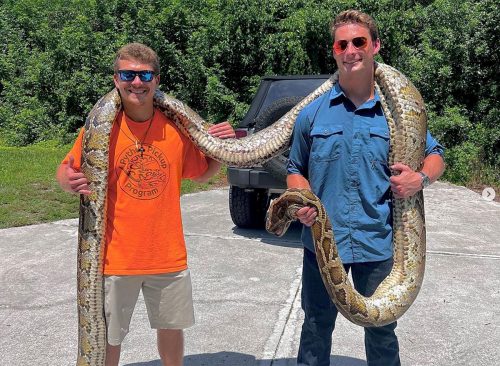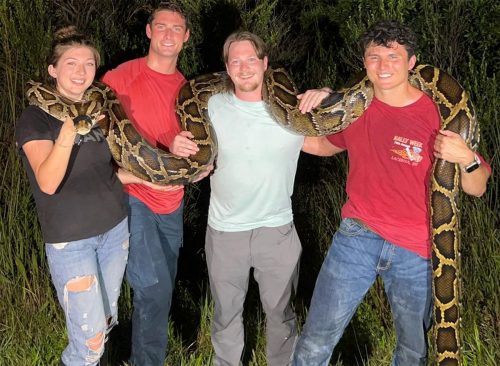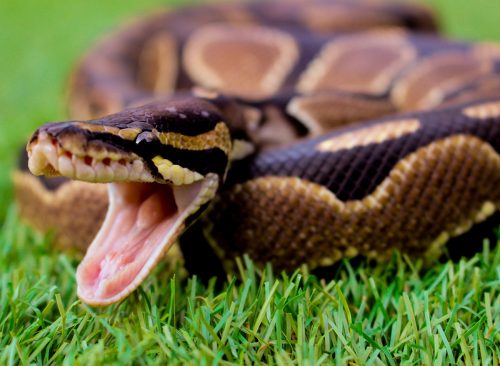19-Foot Burmese Python is Largest Ever Caught in Florida
Even the python hunters were scared of the huge snake.

According to a recent paper produced by the U.S. Geological Survey, the Burmese python population has exploded in only 20 years from a few snakes at the southern tip of Everglades National Park to an invasion that envelops the southern third of Florida. Not only are the pythons growing bigger than ever, but their nests are filling up with record numbers of eggs. Just weeks after the largest nest of python eggs was located in Florida, the largest ever python has been caught. Here is what you need to know about it.

According to the Conservancy of Southwest Florida, they were contacted by a group of python hunters who caught a female Burmese python in Big Cyprus National Reserve. They wanted to know the “full scope of the size of their catch.”

The results: 19 feet or 579cm. and 125 pounds, “officially the longest ever documented,” the Conservancy says. The longest Burmese python previously recorded in Florida was 18 feet 9 inches.

The Conservancy released a video. “It’s the only snake I’ve ever seen that scared me enough where I just didn’t know what to do,” said Jake Waleri, one of the snake hunters.

“It was a fight, and it was a good one, definitely one to remember,” he said. “We brought the snake to the Conservancy to be officially measured and documented,” the 22-year-old, a Naples native, added. “We wanted to donate this find to science.”

“It’s awesome to be able to make an impact on South Florida’s environment,” he added. “We love this ecosystem and try to preserve it as much as possible.”

“It’s pretty terrifying to know that these animals are so destructive to our ecosystem. But knowing that we can go out there and take care of monsters like this and get them out of the Everglades is something that makes me feel good,” added snake hunter Stephen Gauta.

“We had a feeling that these snakes get this big and now we have clear evidence,” said Ian Easterling, a Conservancy Biologist. “Her genetic material may prove valuable for an eventual understanding of the founding population of South Florida. We will be collecting measurements and samples that will be distributed to our research collaborators.”














